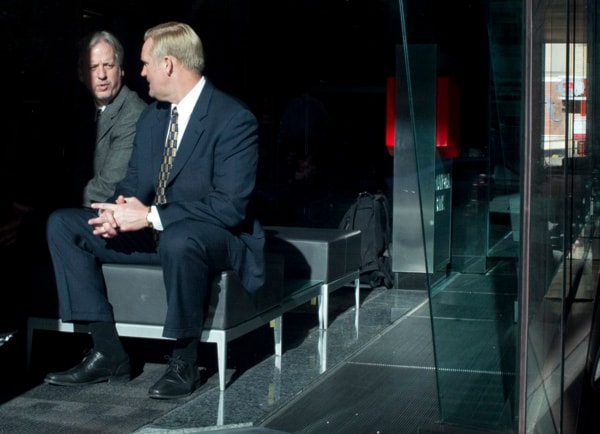The authors of a new book on employee engagement say that being receptive to the needs of workers is critical during tough economic times, partly to ensure productive employees don’t fly the coop.
“There is no question that over the last couple of years the notion of ‘we need to do more with less’ has become so prevalent,” said Tom Agnew, co-author of “The Enemy of Engagement.”
“’We’re downsizing, we’re cutting costs, we’re cutting expenditures ... and I can’t, as a manager, focus on my people because I’m so focused on making sure that I spend less money and we get the stuff done with the same amount of people.”’
Agnew said that approach is “unfortunate” and the “wrong thought process” for a couple of reasons.
“From an employee perspective, when they hear ‘we have to do more with less’ — what does that mean?” he said. “You want me to work harder, you want me to work longer, and in all likelihood, you’re going to give me less resources to do it — and you’re not going to pay me any more.”
Co-author Mark Royal said there needs to be a shift in the conversation around “doing more with less,” moving from being solely centred around employee motivation to how organizations as a whole can better adapt and enable their workers.
“Especially amid the downturn, we’ve culled so heavily on that employee motivation to help us fill in gaps and deliver more,” said Royal.
“I think if organizations are looking to sustain work and truly get more with less for the long-term, they need to think more about how employees are being asked to work ... and are organizations doing all they can to remove barriers and provide employees what they need to deliver?”
A recent survey by global professional services company Towers Watson revealed that Canadians cite excessive workloads, lack of work-life balance, unclear or conflicting job expectations and inadequate staffing as the top sources of workplace stress.
Agnew and Royal are leaders in the employee research division at Hay Group, a global management consultant firm. They have been keynote speakers during the Canadian Management Centre’s eight-city National Thought Leader Series, which concluded Tuesday in Halifax.
In their book, the authors outline strategies for managers to help combat frustration which they describe as the “silent killer” in the workplace.
“I think the frustration factors tend to come back to not how much people want to get things done but how able they are,” said Royal.
“Fundamentally, it’s about people who are engaged and motivated but feeling some tension because their desire to deliver isn’t matched by their ability to deliver based on the roles in work environments that they’re working in.”
The authors write that most organizations are poorly positioned to recognize and respond to the concerns of frustrated workers because they aren’t asking them, can’t hear them or don’t want to know.
Among their suggestions, Agnew and Royal recommend performance management, in which managers specify clearly what employees need to accomplish, set standards and provide feedback on an ongoing basis.
“It’s not just about setting goals for employees and coming back a year from now and having a performance review and finding out how well you did your job,” said Agnew. “It’s about things like clarifying must-win battles.
“’Have I helped you prioritize all the different goals that you have so that you know where to focus your energy first and foremost that will better help you accomplish your job and the organization be more successful?”’
Royal said frustrations that are affecting motivated employees may not be highly visible to managers, and creating a space to address them upfront will help the situation.
Agnew said this can be accomplished through one-on-one meetings or in a larger group setting. But there should also be an anonymous, confidential way to share concerns for those not comfortable with doing so publicly.
The authors also advised giving workers authority and decision-making ability for their jobs, allowing them to have input about how their work is structured and encouraging them to come up with new and better ways of doing things.
And managers shouldn’t just be considering workers already within the organization but looking to those they hope to one day welcome — and retain.
Businesses want to recruit and attract star job candidates, and will face obstacles if working conditions don’t allow employees to function effectively, Royal noted.
